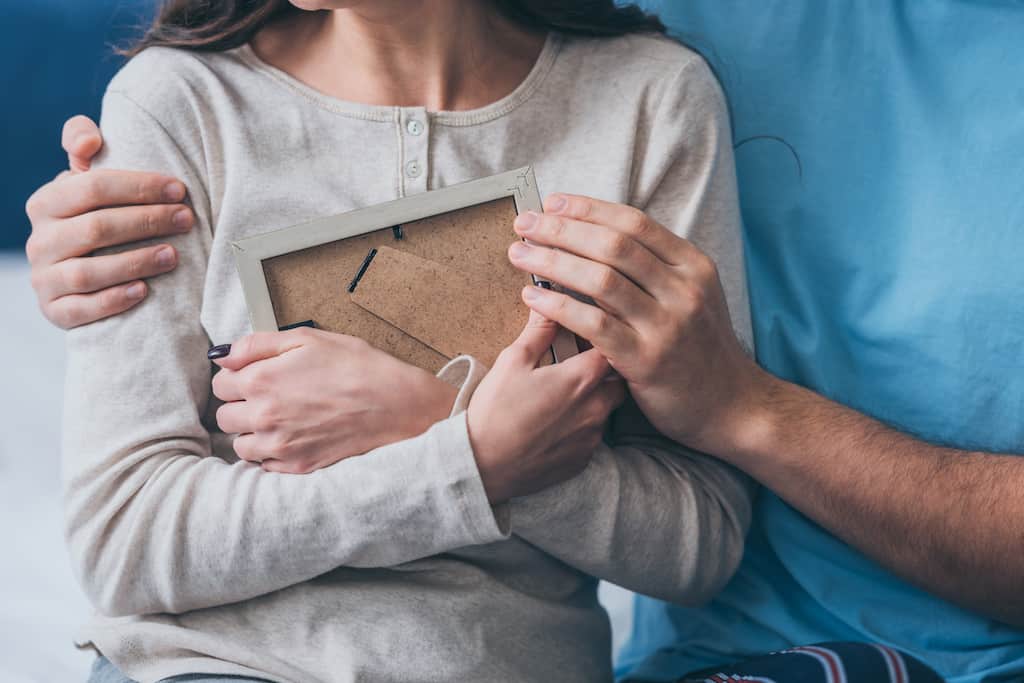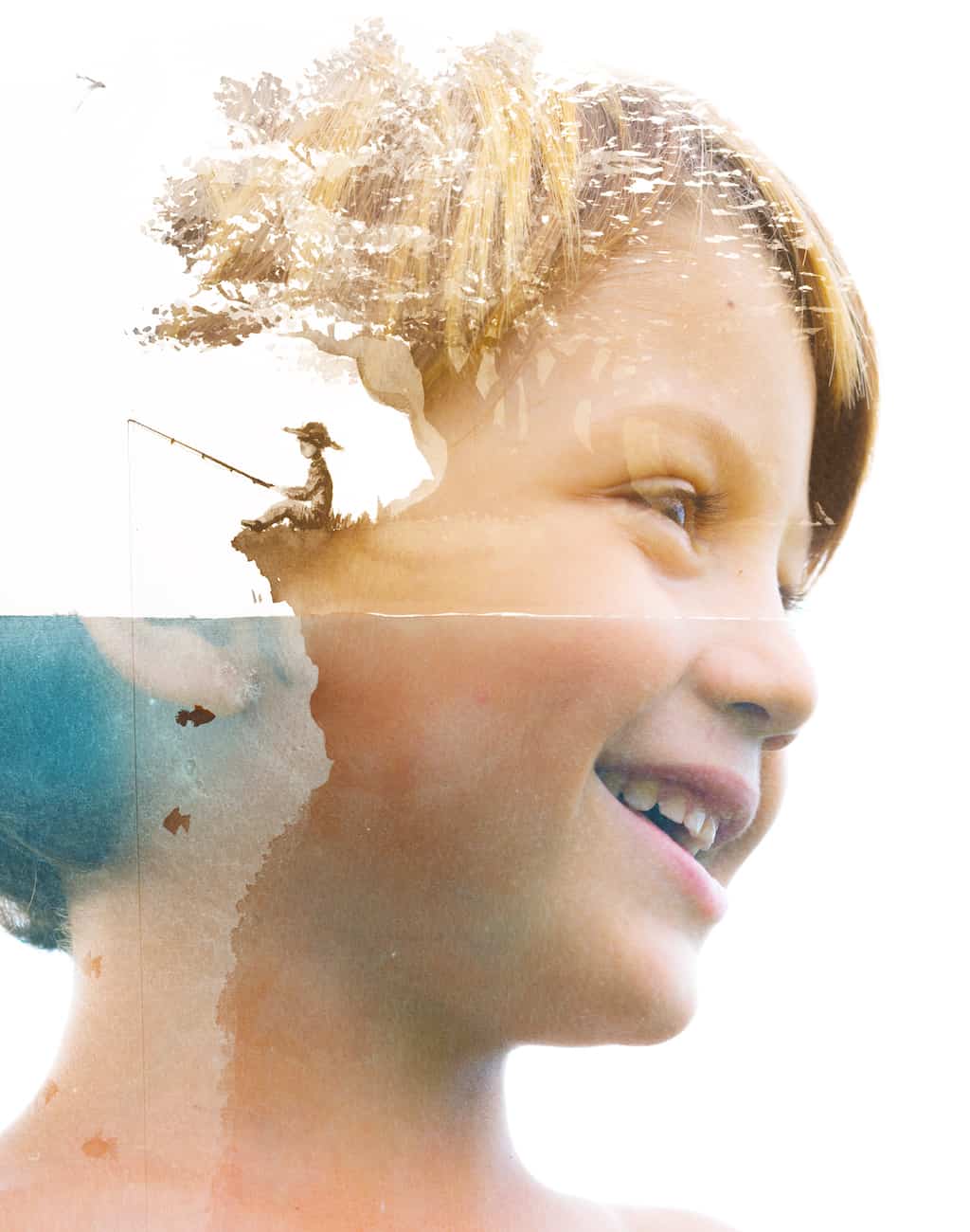How to Declutter Sentimental Items: 20 Tips to Let Go EASIER!
This post may contain affiliate links for your convenience. That means that if you make a purchase, I will receive a small commission at no extra cost to you. Read more here.
Sentimental items can be a blessing or a curse. On the one hand, you want to remember past events and cherish memories of lost loved ones, but on the other hand, having too much sentimental clutter can stop you from being fully present in your own life.
If you are a sentimental person, you might be struggling to know how to declutter sentimental items in your home; if so, then this blog post is for you!

What is sentimental clutter?
Sentimental clutter is any item that holds an emotional attachment or memory.
This can include sentimental paper items such as photos, letters, children’s artwork, knickknacks, or any number of things.
It could be the antique cedar chest that your grandmother kept at the foot of her bed or the trophy you won in a softball tournament in high school.
Basically, sentimental items are everywhere!
Why do people keep sentimental items?
People keep sentimental items for many reasons.
Some people feel like they need to keep these items to remember the past. Others may feel like they need to hold on to sentimental items to cherish memories of lost loved ones.
Sentimental items can be good, but if you collect sentimental items to the point that they take over your home and your life, causing you stress, anxiety, or pain, then at that point, they become sentimental clutter!
Science also has revealed that things like genetics and trauma can cause people to be more emotional and sentimental than others, so don’t compare yourself to anyone else if you find it hard to get rid of these things!
READ MORE: 90 Letting Go Quotes to Help You Heal and Move On
My own experience as a sentimental hoarder
I have A LOT to say about sentimental clutter because almost everything I owned was precious and sentimental to me as a recovering emotional hoarder.
After my mother passed away when I was nine, my dad got me started putting things into boxes “to remember her by” or “just in case,” and so I grew up thinking it was normal not to get rid of things but just to put them into boxes and keep them forever.
It only got worse in my early 20s when I lost my father, my home, for a total of eight family members and friends in a single year (yes – it was painful and very traumatic.)
But what I’ve learned along this five-year minimalism journey is that if we treat everything as if it were special, then nothing is truly special.
We aren’t honoring our loved ones, ourselves, and our own time and peace of mind if we are stuffing everything in boxes to let them collect dust in our garages and basements.
20 tips to get rid of sentimental items
I hope that these sentimental clutter tips will help you let go of the sentimental clutter in your life so that you can focus on creating space for what matters most to you and your family.
If you are looking for more help, you can always check out the blog post where I share my simple 5-step method to declutter an entire home and keep it clutter-free, along with a handy free 10-page decluttering checklist.
1. Start with easier clutter categories
This is perhaps the most critical sentimental clutter tip on this list: don’t make the mistake of starting your decluttering journey with your most sentimental items!
You will be much more successful later if you begin by decluttering less difficult categories, like your bathroom drawer or kitchen items. Get in touch with your feelings about what you own and how it feels to let go of an item.
Take it slow, and that will help ease your mind and make the process feel a bit more manageable. We want to create good, healthy, and intentional habits so that you can declutter your home without regret.
2. Be present
It’s easy to get overwhelmed by negative emotions like guilt and fear or indecision when decluttering sentimental items.
After all, these are the objects that often have the most meaning for us.
Choose a window of time where you have a peaceful and quiet setting to go through your sentimental items with care and attention.
Focus on having the life you want, not wanting the life you had.
Marissa Zheng
READ MORE: 120 Best Minimalist Quotes That Are Simple & Meaningful
3. Plan ahead
Another way to set yourself up for success is to plan ahead.
Planning ahead means knowing in advance which sentimental items you are tackling that day, how long it might take, and what you are going to do with them after you declutter them.
This brings me to the next tip, which is to prepare boxes and bins to sort the clutter as you go through it.
4. Prepare boxes or bins before decluttering
Before you even touch a single sock, grab a few boxes or bins to keep things sorted as you declutter it.
Label the boxes:
- Keep
- Donate
- Sell
- Recycle
- Trash
As you go through your items, place the ones you wish to discard into the appropriate box. This ensures that you touch each item once and make the decision once!
If you pile everything that you want to get rid of up and then have to sort it again when deciding how to get rid of it, chances are you are going to think twice about the decision you’ve already made to let go.
Some people like to have a keep box, but I typically just put the keeps right back as I’m decluttering; however, it’s up to you.
FIND OUT MORE: 50+ Mindful Ways to Get Rid of Stuff After Decluttering

5. Go for small wins
If you’re easily overwhelmed, start with one small area or one type of sentimental item.
Pat yourself on the back and take a break when you’re done. You can then move on to a new area or project in your next decluttering session.
Breaking big declutters up into more manageable chunks sets you up for those small wins that give you the positive reinforcement you need to keep moving forward!
READ MORE: 20 Helpful Tips for When You’re Overwhelmed and Stressed Out
6. Peel the layers
Remember, just because you keep an item today doesn’t mean you need to keep it forever.
Most people will require multiple decluttering sessions spread out over a period of time. This helps make sure you don’t declutter anything that you’ll regret later and make you feel more confident about your decluttering decisions in the future.
Rome wasn’t built in a day, and your home didn’t get cluttered in a single day either! So don’t worry if you need to revisit and declutter more in the future.
Just like an onion, you need to keep peeling back the layers until you find the sweet spot that simplifies your life the right way.
7. Ask the important decluttering questions
Sooner or later, you’re going to get stuck – don’t worry, it happens to EVERYONE!
When you find yourself unsure whether to keep or get rid of an item, refer to these 15 decluttering questions to ask yourself. They can help make your choices easier and faster!
8. Acknowledge and respect your feelings
Don’t ever let yourself feel guilty or ashamed if you get upset or even start crying over clutter – I do it ALL THE TIME. 🙂
If you’re sentimental about something, that’s okay! Trying to pretend that your feelings don’t exist won’t make them disappear.
Acknowledging your feelings is a natural and healthy part of the process.
BE INSPIRED: Top 10 Minimalist Mom YouTube Channels to Follow
9. Be grateful
Gratitude can help make letting go of sentimental clutter less painful.
If you find yourself tearing up or fearful about decluttering, take a moment to bid the item “thank you” and “goodbye.”
It might sound cheesy, but it is super effective! This small gesture helps you bring closure to the relationship with the item and makes letting go easier.
(Psst – seriously, I do this all the time with baby stuff and clothing that my kids have grown out of; it works!)
READ MORE: Why Always Wanting More is Bad for You – and How to Quit!
10. Find your favorites
Instead of thinking about what you want to get rid of, focus on what you want to keep.
Ask yourself which sentimental items are your favorites. Which ones bring you the most happiness and joy?
I call this process finding your North Star – when you find your North Star items, they can guide you and light the way as you work towards a clutter-free home.
READ MORE: This “One In, One Out Rule” is the Secret to Home That STAYS Clutter-Free!
11. Get rid of the clear “nos”
After you’ve found your favorites, the clear nos are on the opposite end of the spectrum.
These can include:
- trash
- broken toys
- worn-out or stained kids clothes
- clothing in a size that doesn’t fit you
- things you haven’t used for six months or more
Don’t attach meaning to everything and let go of the clear discards.
READ MORE: 10 Toxic Fantasy Self Items to Declutter Right Now!
12. Let go of fear and guilt
Remember, your things are not your loved ones. Their memories are inside you, not in the things they left behind.
Emotions like fear, guilt, and buying regret often prevent us from getting rid of items, especially if we worry about money wasted or if the items belonged to loved ones that are no longer with us.
Emotional guilt over getting rid of something sentimental – “I can’t believe I’m throwing away my mom’s favorite mug!”
Financial guilt – “But I spent $100 buying this on Black Friday – it’s a waste to get rid of it!”
Or fear – “But what if I miss this later and I can’t get it back?”
You don’t need to keep things in your home just for the sake of having them there.
Also, don’t you think your loved ones would want you to be happy and well, instead of living with negative feelings associated with sentimental clutter?
If you have gone through the previous steps and know that you want to let go of an item, do so without fear or guilt.
Here are two posts to inspire you and guide you in working through these emotions:
- 20 Things to Let Go of for a Better and Happier Life
- 50 Healing Affirmations for Letting Go and Moving Forward

13. Declutter emotional duplicates
When you think of duplicates, you might think of things like having three spatulas or five pairs of the same black leggings. But what about emotional duplicates?
Emotional duplicates are items tied to a single event, person, or place.
Common emotional duplicates include:
- holiday mementos, like ornaments and cards
- souvenirs from a single trip, like photos, clothing, or tchotchkes
- school memories, like trophies, artwork, awards, and pictures
Take a look at how many items you are keeping to remember a single person, place, or event and decide if you need all those things when maybe just one or a few would do.
READ MORE: 70+ Decluttering Quotes to Inspire and Motivate You
14. Keep the most special memories
Remember, if we treat everything as exceptional, then nothing is truly special.
Let’s take a wedding as an example.
You don’t need to keep every single thing that reminds you of your wedding. Focus on keeping your favorite memories or the things that you use daily and get rid of the excess.
Do you need all of this wedding memorabilia?
- Guestbooks
- Placecards
- Wedding bouquets
- Wedding dresses or suits
- Photo albums
- Multiple copies of menus or invitations
You might get the most joy out of the plates that you received at your wedding and use every day and the photo album of your special day.
There’s no set number of items that you need to own per event, but ask yourself if you genuinely value, use, and honor an item or if you could let it go.
15. Set boundaries
Like it or not, life has boundaries.
You only have so much space in your home, money in your pocket, and time in your life to spend maintaining your possessions.
If you tend to pile up clutter, you might find it helpful to set physical boundaries for a category of items, like books, photo albums, or family boards games.
When that space is filled up, then it’s filled up. You either stop shopping and collecting more or get rid of something to make more space for new things.
You can use the following to set boundaries:
- drawers
- dressers
- wardrobes
- bookshelves
- toy storage and organization units
- closets
READ MORE: 20 Reasons Decluttering is So Hard – and What to Do About It!
16. Organize sentimental items by category
Keep similar sentimental items together as much as possible to help reduce visual clutter and maintain tidiness in your home.
This can look like putting photos and photo albums in one place, keeping collectibles in a single china cabinet, or designating one room for hobbies and craft supplies.
This rule can help contain the clutter, but don’t go TOO crazy over it because sometimes smaller homes or unique living situations don’t give you this option.
Take our 100-year-old European home, which doesn’t have any closets, as an example; we’ve had to develop quite a few creative storage solutions to corral clutter in our home!
BE INSPIRED: Top 10 Organizing Blogs to Follow and Tidy Up in 2022
17. Use it or lose it!
Sentimental items don’t do us or anyone else much good if they are tucked away in a lonely box in the corner of your basement.
Implementing a use it or lose it policy means that you want to prioritize keeping things that you use daily, that add value to your life, and that you honor and display with pride.
That’s minimalist lifestyle 101, folks!
18. Put “maybes” in a time out box
If you’re really on the fence and can’t decide if you want to keep a sentimental item or let it go, give a time-out box a try!
Also called quarantine boxes, a time-out box or bin can make letting go of things less scary.
Here is how to use a time-out box for clutter:
- Put anything you’re unsure about in the time-out box
- Write the date on the outside of a box (OR on a piece of paper to put inside the box)
- Place the container out of sight and out of mind, such as in your basement or garage
- If you don’t reach for the item in a set period, such as 30 days or 3 months, get rid of it guilt-free
You can also set a timer so that you don’t forget to check; 99% of the time, you’re probably going to forget about and go ahead with decluttering that thing!
19. Know thyself
There’s a reason this slogan was carved in stone in the temple of the Oracles at Delphi.
It’s a lot easier to let go of the rest when you know yourself, what you value, and what matters to you.
Decisions will become easier, space will clear up, you’ll become less likely to buy crap you don’t need, and you’ll feel happier and less stressed out overall.
20. Make a memory box
Yes, we want to prioritize keeping things that we use daily or that we can display with honor in our home, BUT sometimes you will find there are things you want to keep that don’t fit nicely into those two categories.
Sure, I kept one of my mom’s pretty pink satin slips, but that doesn’t mean that I wear or want to display it – so what then?
Sentimental items that we don’t use often or display can be kept in a memory box to revisit from time to time. A memory box can be any box or bin used to store and organize precious treasures and memories when you want to take a trip down memory lane.
Resist the urge to put everything you’re unsure about into a memory box; that allows your memory box to become a catch-all for clutter! Keep things you genuinely love, treasure, or have a strong meaning or memory attached to them.
After five years of decluttering 30 years of sentimental items I’d been hoarding, I now have a single, small memory box that I keep in my closet, which you can see in this video.
FIND OUT MORE: How to Make a DIY Memory Box in 5 Easy Steps (for Adults OR Kids!)
Final thoughts on decluttering sentimental items:
As sentimental clutter is hard to declutter, you must take your time when deciding what items are worth keeping.
Don’t just act on impulse, but do the deep internal mindfulness work that it takes so that you can declutter without any regrets!

